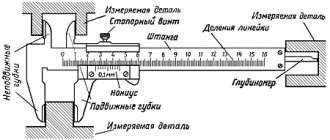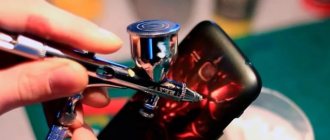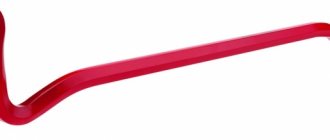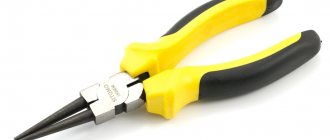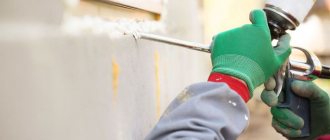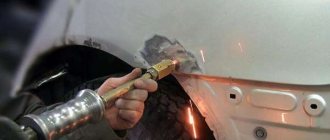Precision is paramount | 12/26/2016
A lux meter is apparently some kind of measuring device. But not everyone will give a clear answer as to what quantity he controls. It’s good if they remember about the lighting in the room or workplace. Indeed, the device is designed to measure one of the characteristics of the lighting environment. We will try to cover this issue in detail: the purpose, principle of operation of the device and methods of its use.
Purpose and principle of operation of a lux meter
The main purpose of the device is to measure the level of illumination at the required point in space.
Where a lux meter is used, you can easily adjust this indicator, which depends on:
- number of light sources, including artificial and natural;
- light pressure of each source;
- distance between the measurement point and the light source;
- reflectivity of nearby surfaces.
The device is actively used in the following cases:
- To control sanitary standards for lighting in residential premises.
- To measure the level of illumination of workplaces, which allows maintaining comfortable working conditions and hygiene for workers.
- To control the illumination of premises in production areas, schools, libraries, medical institutions, museums, etc.
- For selecting the brightness of lamps in greenhouses and greenhouse farms where plants are bred and maintained.
- To determine the shooting exposure when taking photographs.
- To adjust the brightness of signal lights and illuminated advertising.
- As part of a pulse meter-brightness meter - to measure the degree of pulsation of the image of monitors and illumination in general, caused by the flickering of LEDs, fluorescent and energy-saving lamps.
- To check whether the actual illumination corresponds to the calculated level when installing lighting systems.
When the device operates, a luminous flux of a certain spectrum is converted into an electric current with the corresponding intensity characteristics of the first.
The results are displayed on the device screen.
Given how a lux meter works, it makes sense to use models that allow you to select the operating mode for a specific light spectrum.
Operating principle of the device:
• The electrons in a photocell made from a semiconductor are activated by light. The brighter the light flux, the more actively electrons are released.
• The throughput of the photocell changes, which is recorded by the electronics of the device, which, after processing by the processor, is displayed on the screen.
• The illumination meter in operation produces results, the correctness of which depends on the correct orientation of the sensor relative to the light flux.
The main types of lamps for high-quality lighting of rooms of any size
Electricity is usually converted into light flux by all kinds of lamps. The most popular among people were incandescent lamps with tungsten filament. They provided the necessary illumination, but are now gradually going out of use, since they constantly require large amounts of electricity, which not everyone can afford now. The second most popular are fluorescent electric lamps. They are much more economical, but the illumination from them is much more limited. They use gas as a lighting element, which is illuminated with a phosphor. They are more durable and do not consume electrical energy with increased intensity.
The most economical and expensive are LED incandescent lamps. They consume electrical energy in a small volume, the effect is excellent. Such light bulbs do not require replacement, but in conditions of long-term work in an office, a significantly larger number may be needed. The measurement is carried out twice - in natural light conditions, which makes it possible to determine the need for additional lighting in the dark. For this, a lux meter is used, which has a display on which the indicators are converted into numerical values. This happens due to the built-in photocell. All indicators are officially recorded and, depending on their values, lighting devices are either updated or everything remains at the same level.
Device and characteristics
The main element of a luxmeter is a semiconductor photocell that transfers the energy of light quanta to electrons.
The resulting electrical flow, depending on the type of device, is either converted by a galvanometer, provoking the movement of the pointer needle, or transformed by an optical-electronic converter into digital form, followed by display of the result on the display.
In other words, a classic lux meter consists of a converter and a photosensor, which can be made as a monoblock or as separate modules connected by wire.
Illumination levels are measured in lux, and the emission scale ranges from a tenth to several hundred thousand.
In this case, 1 lux corresponds to illumination of 1 lumen over an area of 1 square meter.
Accordingly, the unit of measurement of a light meter is lux, and lumens indicate the intensity of the light flux.
Material
The body of the portable device is made of durable and reliable plastic material.
For ease of holding, some models have rubberized pads.
In the case of a separate layout, the photo sensors are also hidden by a plastic housing.
Dimensions and weight
The weight of most portable light meters is 0.1 - 0.5 kg, depending on the size of the battery.
Approximate dimensions of devices:
- height: 80 – 200 mm (depending on the layout);
- width: 50 – 80 mm.
Accuracy, error and verification
The state verification scheme for lux meters is fully described in GOST 8.023-2014.
The initial verification of instruments included in the State Register of SI of the Russian Federation is carried out after their repair, or immediately before commissioning.
Periodic verification in most cases is performed once a year.
Includes checking the accuracy and all errors of the device.
Calibration, among other things, implies spectral correction of its photosensor.
Device for measuring illumination Yu-116
The device is still a Soviet development Yu-116 in the range from 1 to 100,000 lux. It consists of 2 parts: a selenium photocell and a pointer galvanometer, which is used to measure readings. Stored in a case unassembled, which provides reliable protection from damage. Before operation, the photodetector is connected to the converter using a plug.
The meter scale has 2 concentric arc scales. The inner one is graduated from 0 to 30 lux, the outer one - from 0 to 100. The photocell is equipped with a light-scattering attachment consisting of white translucent plastic and an opaque ring. It is designated by the letter “K”, measurements with it are made in the above ranges. There are 3 more filter attachments: M, P and T. When installed in parallel with the base attachment K, the measurement range increases respectively: 10, 100 and 1000 times.
Two buttons on the instrument panel are designed to switch from one scale to another. When the left button is turned on, measurements are made in the ranges: 0 – 30, 0 – 300, 0 – 3000, 0 – 30,000 (when installing the appropriate attachments). When the right one is on: 0 – 100, 0 – 1,000, 0 – 10,000, 0 – 100,000. In addition to the buttons on the case, there is a corrector for setting the dial indicator to the zero position.
The Yu-117 light meter differs from its predecessor only in the large number of buttons. Instead of two scale switching keys, the device is equipped with five range switching buttons, which increases the measurement accuracy. Buttons for turning on the device, power control and a zero control knob have also been added. Both models are powered autonomously - from a galvanic element of the Krona type with a voltage of 9 V. The price of devices from different sellers is from 6 to 10 thousand rubles.
Types of lux meters and their prices
Lux meters can be used for their intended purpose both outdoors and indoors.
Structurally, they are divided into:
• Monoblocks – the sensor is fixed directly to its body. This option is convenient for making quick measurements, has less weight, however, it is not suitable for working in hard-to-reach places. Some models have a removable sensor, which expands their functionality.
• With a remote sensor – a more convenient option for taking measurements in places where it is difficult to get to. The sensitive sensor is connected to the main module with a flexible wire, which allows you to easily measure indicators from any direction. Such lux meters are preferable when assessing working conditions.
Depending on the type of indicator, devices are:
• Digital. The measurement results are displayed electronically on the device display. Such lux meters are easy to use and have relatively high accuracy.
• Pointer – the analog indicator has a pointer and a scale, the gradation of which is made in lux. The accuracy of the measurement indicators, compared to the previous version, is significantly lower.
The lux meter can have expanded functionality; according to its characteristics, the device can be:
• Household. Cheap models display only illumination; they are used for quick measurements that do not require high accuracy. More expensive options are capable of independently calculating the average illumination value based on several measurements. The design provides internal memory and an interface for connecting the device to a personal computer or laptop. The minimum price for the device is 1500 rubles.
• Professional – equipped with light filters, the spectral sensitivity of the photosensor, which is almost similar to the human eye. They make it possible to more effectively measure the properties of light fluxes of various color shades. Outdoor models are additionally equipped with special absorption filters that expand the measuring range in bright light. The measurement error is about 1%. The cost of professional models starts at 10 thousand rubles.
Often, professional lux meters are equipped with additional equipment that allows them to measure other characteristics of the luminous flux:
• Luxmeter-brightness meter. In addition to performing the functions of a lux meter itself, it is designed to measure the brightness of luminous objects. A high-quality device will cost 10 thousand or more rubles.
• Light meter-pulse meter. This device, in addition to measuring illumination, is capable of determining the pulsation (flicker) coefficient of computer monitors, tablet screens, phones, and other devices. Lux meters with pulsation measurements will help you choose, for example, a lamp with flicker indicators that are safest for the human eye. The minimum cost is 4.5 thousand rubles.
• Universal measuring instruments that simultaneously perform the functions of a lux meter, brightness meter and pulse meter. The cost of good models with verification starts from 15 thousand rubles.
The price of lux meters greatly depends on the operating ranges.
For this reason, higher-quality target devices with a narrow measuring range will cost more than their Chinese counterparts “for all occasions.”
As an alternative to a lux meter, special applications installed on iOS or Android can serve.
However, many tests carried out give the same results: a lux meter in a smartphone is not able to replace a full-fledged device, as it has a large error, the magnitude of which depends on the phone model.
Criterias of choice
Before purchasing such a device, it would be useful to familiarize yourself with the tips that will help you purchase the best option:
Measuring range and sensitivity. On sale you can find instruments for measuring solar and ultraviolet radiation, and there are instruments for measuring diode light or neon lamps. When choosing, you should decide in advance what type of light you will have to work with. There are also universal devices, but their cost is much higher than specialized ones. Additional options
If you need to analyze several indicators at once (temperature, pressure, noise), pay attention to universal devices. Their cost will also be higher, but they will save you from the need to carry several different devices with you.
On the contrary, if you only need the device to measure luminous flux, it is better to choose a simple, budget option. Ripple factor. If you need to calculate the value of this indicator, pay attention to professional equipment; household appliances do not provide a function for calculating it. Computer compatible. Today there are many professional programs that process data; if you need to transfer data from their device to the device, familiarize yourself with the methods of its implementation in advance. Is it possible to connect via USB or WiFi module.
Which lux meter is better and how to choose it?
Choosing a lux meter begins with setting the right tasks that this measuring device should solve.
Criteria to follow:
• Operating range and spectral sensitivity. Each device is capable of working only with a certain type of radiation, for example, ultraviolet, or light from neon lamps. There are universal devices where a special switch is provided to set the measurement interval. The overload indicator will allow you to determine whether the measurement range has been exceeded.
• Additional functions. Some models, in addition to working with light flux, are capable of measuring ambient temperature, noise level and even air pressure. The price tag for such variants of devices is noticeably higher, however, one such device can replace several different types of meters at once, the total cost of which individually will be even higher.
• Dimensions. Portable devices that fit easily in one hand are much more convenient to use.
• Screen. Its size directly affects the ease of reading data. The display backlight, if provided, will allow you to work with the lux meter in low light conditions.
• Nutrition. Preference should be given to devices with an autonomous power supply, since it will allow measurements to be taken in absolutely any conditions, regardless of the presence of a household network.
• PC connection. For professional devices, such a function is mandatory.
If you need to carry out operational measurements, for example, when setting up lighting systems, it is enough to have a good inexpensive monoblock light meter on hand.
Its resources will be sufficient to carry out inspections.
If it is necessary to assess working conditions, professional models with a remote sensor will be more effective, since they have higher measurement accuracy and less error.
Often, such lux meters are equipped with built-in memory and can store measurement results.
Attention!
When purchasing a lux meter, you should definitely pay attention to its passport, where all the features of the device are fully indicated.
In addition, if professional use is planned, it must be included in the State Register, which guarantees compliance with all declared technical characteristics.
How to measure lighting in a room?
h22,0,0,0,0—>
Measuring algorithm:
p, blockquote53,0,0,0,0—>
- We place the device or remote sensor on the surface on which the measured light falls. We place the luxmeter so that the plane of the photosensor lies parallel to the surface being measured.
- We take the calculation results, measured in lux, from the screen or from the scale of a dial gauge.
- We calculate the necessary parameters and evaluate the level of illumination.
- By comparing the measurement results with the standards, we draw a conclusion about the quality of lighting.
- The optimal level of lighting can be found out from SNiP 23-05-95* - building codes and regulations.
Do not forget that natural and artificial light are not measured together - only separately. Also, in order to avoid mistakes, do not carry out calculations if a shadow falls on the illuminated surface.
p, blockquote54,0,0,0,0—> p, blockquote55,0,0,0,0—>
What you need to know about lux meters?
When taking measurements with a lux meter, it is important to know about some features of its operation:
- If analog measuring equipment is used, then the needle must be at zero before taking measurements.
- If the device shows illumination less than 30 lux, and photocell attachments are used, measurements should be continued without them.
- Movements of the device directly during the measurement process create additional errors.
- Extraneous light sources can significantly distort measurement results.
Due to the high cost of professional lux meters, it is not practical to buy them for single measurements.
It is more profitable to rent the device for the required time from specialized companies that sell geodetic and control equipment.
Models provided by such companies always have up-to-date verification.
When do you need to measure the level of illumination indoors?
h23,0,0,0,0—>
The light level is measured before using the lighting, for example, when replacing wiring or individual lamps. It is also necessary to take measurements if the functionality of the measured room changes: the classroom becomes a basement. I’m exaggerating, of course, but the point is clear. These rules apply to all types of premises: areas, individual workplaces, corridors, and so on.
p, blockquote56,0,0,0,0—> p, blockquote57,0,0,0,0—> p, blockquote58,0,0,0,0—> after—>
To measure the level of light radiation and the actual illumination of the surrounding space, a lux meter is used - a specialized electronic device.
There are several types of this measuring device, each of which has its own error and sensitivity to specific spectral radiation.
Why do you need a lux meter, its operating principle, characteristics and selection features - more on all this below.
Typical illumination, examples
| Illumination, lux | Where |
| 10 −5 | The light of Sirius, the brightest star in the night sky |
| 0,0003 | Moonless starry sky |
| 0,01 | Quarter Moon |
| 0,27 | Full moon in a clear sky |
| 50 | Living room |
| 100 | Very cloudy day |
| 320-500 | Study |
| 400 | Sunrise or sunset on a clear day. |
| 1000 | It's a nasty day; TV studio lighting |
| 4-5 thousand | Midday in December - January. |
| 10-25 thousand | Clear sunny day (in the shade) |
| 32-130 thousand | Under direct sun |
| 135 thousand | Outside the atmosphere at the average distance of the Earth from the Sun |
The power of the solar radiation flux at the entrance to the Earth's atmosphere is about 1366 watts per square meter.
Roughly speaking, an illumination of 100 lux (or rather 98.83 lux) approximately corresponds to a solar radiation flux of 1 W/m². This makes it possible, using a lux meter, to approximately determine the power of solar radiation flux in a specific place at a specific time.
Under direct sunlight, the power of solar radiation flux is approximately 320 W/m² or more (depending on the height of the Sun above the horizon and the latitude of the place).
And in the shade on a clear sunny day, the power of solar radiation flux is approximately 100 to 250 W/m².
When using a lux meter, you need to remember that for successful photosynthesis, plants need illumination of at least 20,000-hour lux. The sun in cloudless weather creates such illumination almost all year round, and from March to September in central Russia it produces significantly greater illumination.
Use a lux meter to measure the illumination of plants on window sills, in greenhouses, in greenhouses, in beds, ... in order to have objective indicators and not rely on the Russians, Perhaps, Perhaps, and Somehow.
A lux meter, of course, is not an absolutely necessary device, but its usefulness for obtaining an objective assessment of the illumination of plants (and animals, as well as solar panels) in an eco-park is obvious to me personally and does not require additional evidence.
. I approve and welcome criticism and exchange of experience. In good comments I save a link to the author’s website!
And please do not forget to click on the social networking buttons located under the text of each page of the site. Continued here...
To measure the level of light radiation and the actual illumination of the surrounding space, a lux meter is used - a specialized electronic device.
There are several types of this measuring device, each of which has its own error and sensitivity to specific spectral radiation.
Why do you need a lux meter, its operating principle, characteristics and selection features - more on all this below.
High-quality installation in one click
“VideoMONTAZH” is an example of a simple editor that makes it possible to achieve good results. The main principle of the program is maximum simplification and speed in creating videos. Already at the beginning of work, you will notice that many processes are automated; editing a real film can take less than an hour.
To stitch together video tracks, just add them to the timeline, select transitions from the collection and save the result.
Similar simplicity applies to other editor features.
Video card in 5 minutes
“VideoMONTAGE” involves a special step-by-step mode for quickly creating congratulatory videos. Trim the video track, put a postcard on it, add a caption, voice over and save the result. The phrase “in 5 minutes” is quite arbitrary - most likely, you will finish it much faster.
Chromakey
The program makes it possible to overlay videos on top of each other with the replacement of a single-color background. This cinematic technology is also implemented in the editor in an extremely simple way - upload both video files, specify the background color - and voila, the magical video editing is complete.
Creating Effects
The program has a collection of filters. The effects are colorful tinting using highlights, film grain, vignettes and other elements. They will add atmosphere and style to the video sequence. In addition, “VideoMONTAZH” involves creating similar custom filters from scratch. Feel free to get creative!
Color correction and stabilization
It’s hard to imagine high-quality video editing without “technical” improvements. In "Video Montage" you can eliminate jitter in the frame, as well as correct errors when setting up the camera, such as incorrect white balance and exposure.
Adding screensavers and titles
You can work through the video from the first to the last frame. Place a catchy intro at the beginning, and informative credits at the end. Use blanks from the program’s collection or design the design manually by overlaying text on top of a picture or video.
As you can see, a video editing program will help not only turn the video in the right direction, but also significantly improve the quality of the picture and add attractiveness. If you are looking for a fast and powerful editor, then here is the right tip for you - download “VideoMONTAZH” and process videos to your heart’s content.
Important Factors
One of the important factors that is taken into account both during the construction of a building and during its operation is the level of illumination.
This indicator is very important because it affects the health of a person’s eyes, his ability to work, and his physical and psycho-emotional state.
Therefore, room illumination is included in labor protection provisions.
Building lighting is divided into two components - natural lighting and artificial.
Natural daylight sunlight enters the building through technological openings made in it during construction - windows.
Testo lux meters
One of the modern illumination meters, the most popular in Russia, is the digital lux meter Testo 540 (Germany). The device is made in one volume, the photocell is integrated with the body, which increases ease of use: there is no connecting wire that can get caught on something, measurements can be made with one hand.
The shape and dimensions of the device resemble a cell phone. The same display is used to indicate the readings, and the keyboard contains only 3 buttons: power on, selection of the measurement system (SI or American - foot-candle) and saving the results. Measuring range: 0 – 100,000 lux or 0 – 93,000 fc.
The device is ideally suited for use in everyday life. With its help, you can measure the lighting level in living rooms, schools, kindergartens, greenhouses, potato storage rooms, and so on. Operating the device is extremely simple: press the power button, select the system (triangle) and that’s it. The result will appear almost instantly. To save the measurement result, press the “mode” button.
The Testo 545 digital device belongs to the class of professional devices for measuring environmental illumination. The light receiver is made separately from the electronic unit and is connected to it by a conductor. Differs from its younger brother in greater functionality:
- memory for storing up to 3000 measurement results;
- storing 99 measurement locations in memory;
- connection to a personal computer;
- constructing a three-dimensional graph of the amount of illumination within the room;
- printing data on a printer.
This device is used in the process of measuring the illumination of buildings, structures, as well as streets, roads and other public places. The price of the Testo 540 lux meter is comparable to the price of the Yu-116 device (about 10 thousand), and Testo 545 is sold for 35 thousand rubles.
A lux meter is one of the most accessible and at the same time effective instruments for measuring the illumination parameters of an object. Its use provides comfortable conditions for a person, both in a work environment and in everyday life. We hope that this article will help you navigate when choosing a device with the necessary capabilities at an affordable price.
Application area
Different types of lux meters are used in the following areas and institutions:
- Occupational Safety and Health Service and Chief Power Engineer;
- Educational institutions;
- Assessment of workplaces;
- Transport companies;
- Sanitary and epidemiological surveillance;
- Health care system;
- Centers for scientific research, standardization and metrology;
- Agricultural facilities;
- Museums, archives (for the preservation of documents, exhibits, books).
A lux meter measures the degree of light intensity in indoor and outdoor spaces. Taking into account operating conditions and research goals, specialists use different types of devices.
A little theory
There is a lot of confusion on the Internet in scientific and technical terms related to the field of lighting technology. The same device is called differently. The device in question, a lux meter, for example, is sometimes passed off as a luminous flux meter, although it is not.
Luminous flux is a characteristic of a lighting element, and we can talk about this value only in relation to a specific lighting source (incandescent lamp, gas-discharge element, LED, etc.). The SI unit of this characteristic is lumen (lm). This is the luminous intensity of 1 candela (cd) per solid angle of 1 steradian (sr).
This parameter is measured using a photometric ball (spherical integrator) with a diameter of 1 or 2 meters, or with desktop integrating spheres ranging in size from 10 cm to half a meter. All these devices, naturally, are not for household use, since the price of even a small domestic device TKA-KK1 for monitoring LEDs is 35,000 rubles.
The flux of light acting per unit area is expressed by illumination. The unit of this characteristic is lux (lux) - the result of illuminating a surface of 1 m² with a flux equal to 1 lumen. The concept of “illuminance” does not refer to the light source, but to the environment. The luminous flux is a constant value for each source, while the illumination at each point in the room depends on several factors:
- the number of sources located near the measurement site;
- light pressure of each of them;
- distances to sources;
- reflective ability of furnishings.
How to measure lamp parameters
In accordance with GOST R 54944-2012, to measure illumination it is necessary to use instruments with a maximum error of 10%. As a rule, this requirement is met by expensive lux meters, the cost of which is so high that they are not purchased for measuring light parameters in domestic conditions. This was the case until recently, until the RADEX LUPIN lux meter appeared, with which you can determine the illumination, pulsation coefficient and brightness. The measurement error is 10%.
The RADEX LUPIN lux meter is equipped with a professional photosensor, which has a spectral sensitivity similar to that of the human eye. By filtering UV and IR radiation with a sensor, it is possible to analyze only that part of the light flux that is perceived by the human eye. RADEX LUPIN can be used to check the compliance of light parameters as specified in SanPiN and other regulatory documents of the Russian Federation.
Digital
The digital lux meter, which replaced the pointer meter, is used to check compliance with working conditions in the workplace. Illumination affects the processes occurring in the human brain. Both weak and excessively bright light have an unfavorable effect, so concentration may decrease, performance may decrease, and drowsiness will prevent you from concentrating on performing production tasks. All this generally increases the risk of injury and the number of accidents. Timely measurements of illumination with a luxmeter in production workshops, construction sites, and on the sites of enterprises associated with hazardous production and difficult working conditions will prevent unpleasant incidents, and even deaths.

